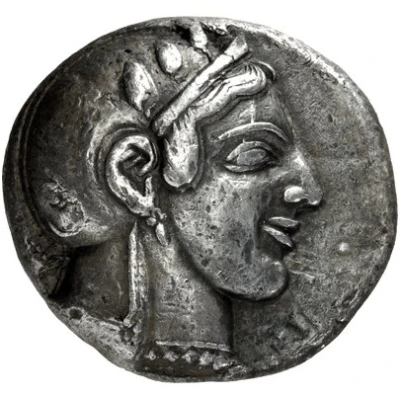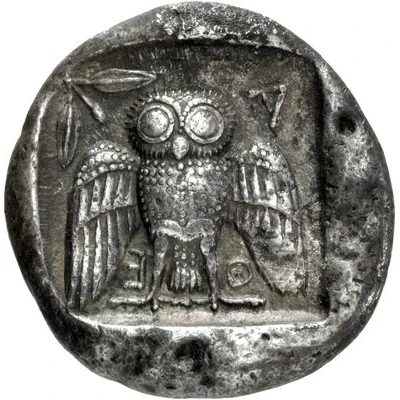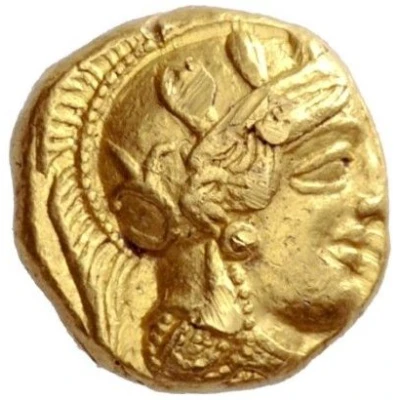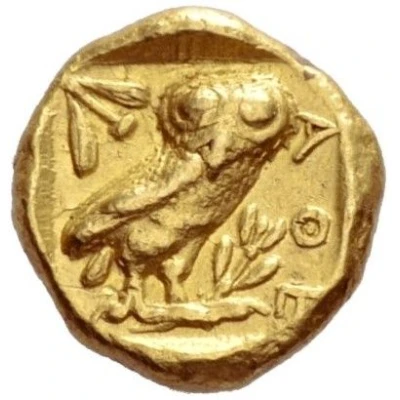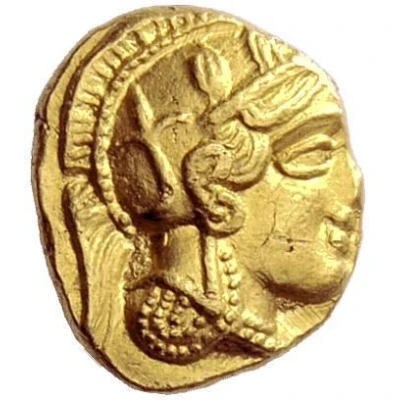
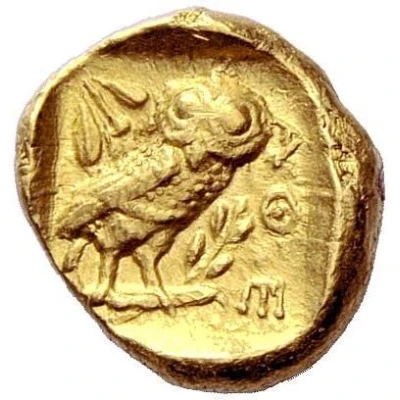

© Numismatica Ars Classica NAC AG
Gold Drachm - ½ Gold Stater 407 BC - 404 BC
| Gold | 4.3 g | - |
| Issuer | Athens (Attica) |
|---|---|
| Type | Standard circulation coin |
| Years | 407 BC - 404 BC |
| Value | Gold Drachm (10) |
| Currency | Drachm |
| Composition | Gold |
| Weight | 4.3 g |
| Shape | Round (irregular) |
| Technique | Hammered, Incuse |
| Orientation | Variable alignment ↺ |
| Demonetized | Yes |
| Updated | 2024-10-09 |
| Numista | N#369745 |
|---|---|
| Rarity index | 100% |
Reverse
Owl standing right with closed wings, head facing; before, branch upwards and behind, olive sprig with one berry. All within incuse square.
Script: Greek
Lettering: AΘE
Translation: Athens
Comment
Based upon the coins that have survived, we can be sure that five denominations of ‘emergency’ gold coins were struck, the largest being the didrachm (stater) of about 8.6 grams and the smallest being the obol of about 0.72 grams. An account of the treasurers of Athens entered sometime after 385/4 B.C. (Inscriptiones Graecae II, 1414, lines 6-7) records the receipt of two gold hemiobols, suggesting that a sixth denomination was issued, though no hemiobols survive. These coins, presumably, would have been 1/24th staters weighing about 0.36 grams. Another Athenian treasurer’s report (IG II, 1408, lines 11-13) provides an even more fascinating detail, namely that when the record was made, sometime after 385/4 B.C., “the dies and the little anvils on which they used to strike the gold coins” were still contained in a wooden box with the public seal.from: https://www.acsearch.info/search.html?id=1390166
Interesting fact
The Gold Drachm - ½ Gold Stater was used as a form of payment for mercenaries and soldiers during the Peloponnesian War, which lasted from 431 BC to 404 BC. This coin was valued at 600 drachmas, which was a significant amount at the time, and was used to pay soldiers for their service. The use of this coin as a form of payment for military purposes highlights the importance of Athens' military power and the value placed on its soldiers during this time period.
